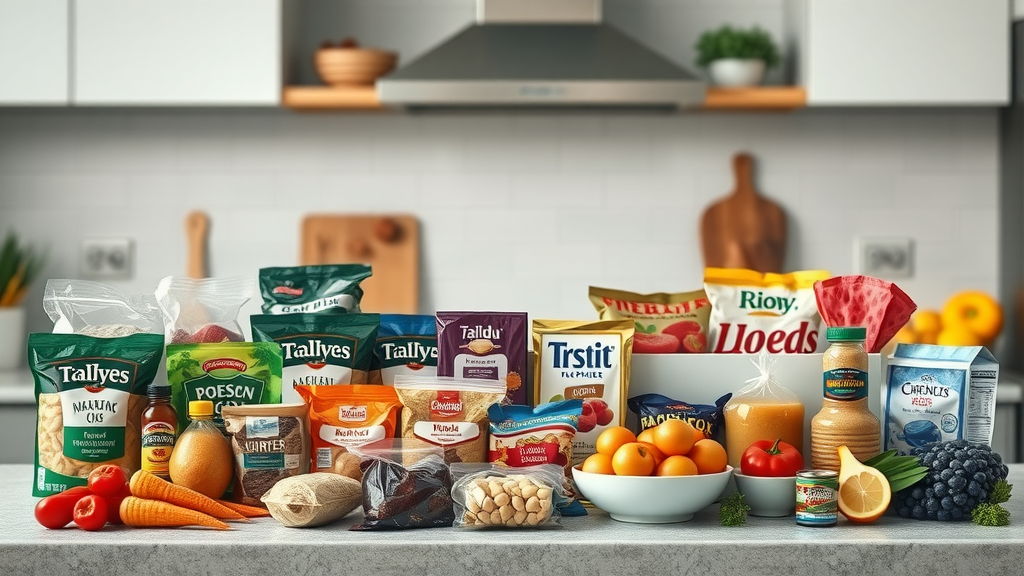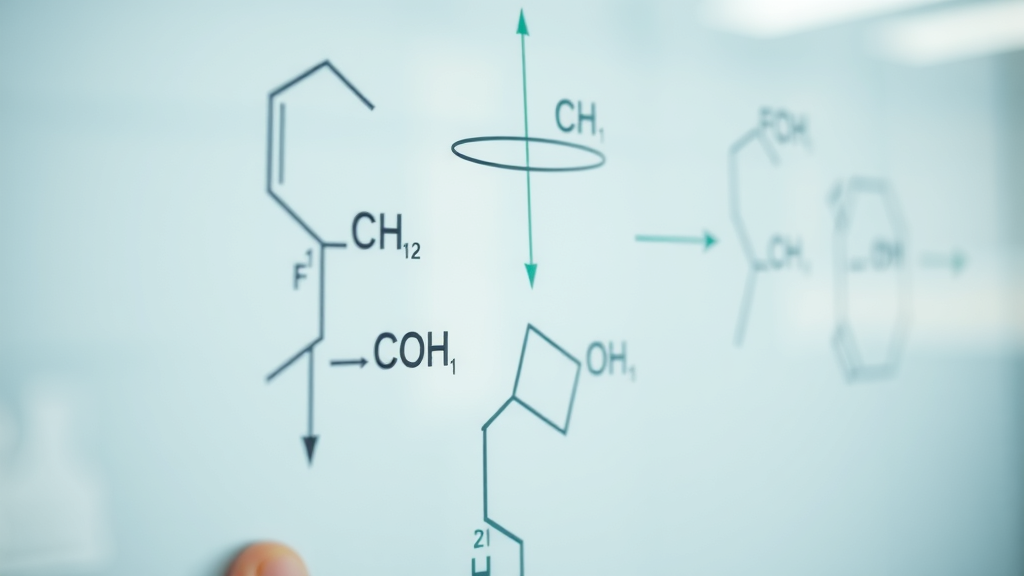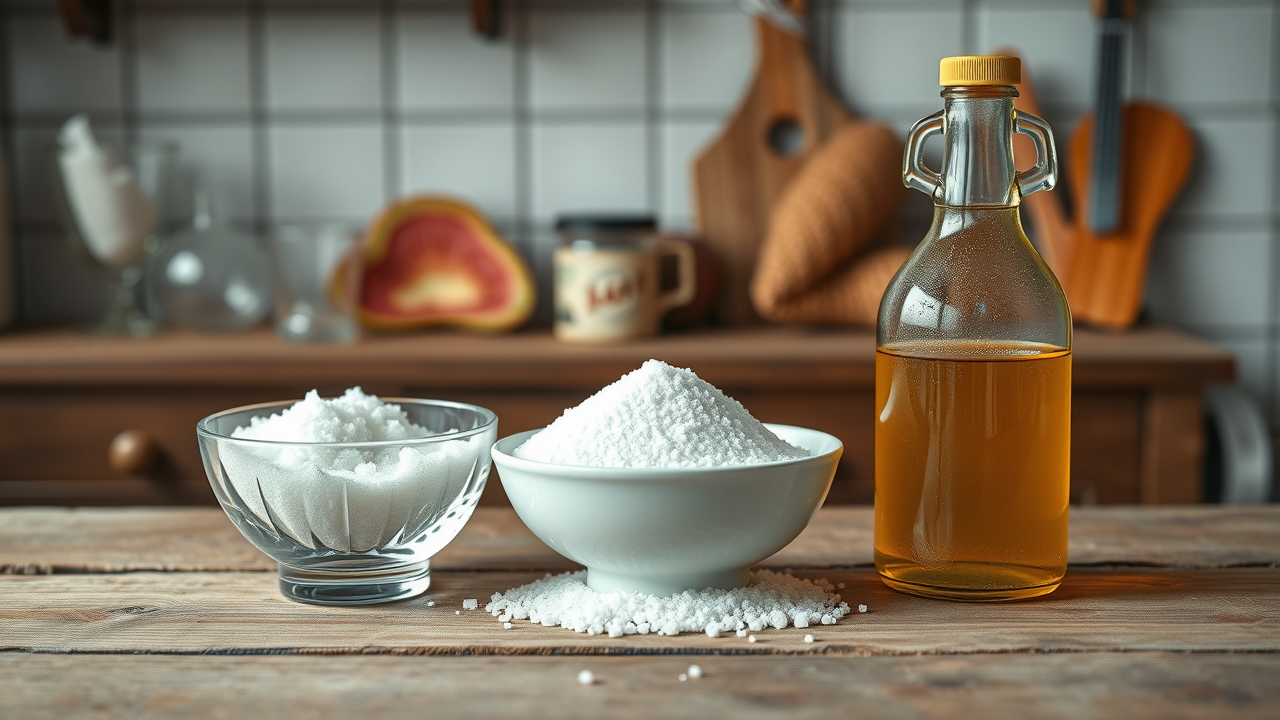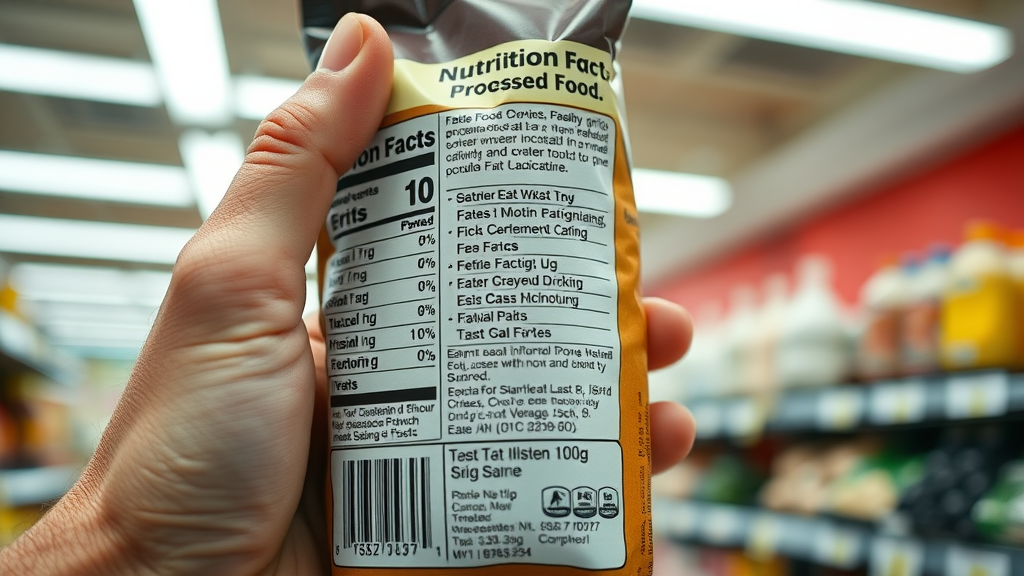Did you know that high fructose corn syrup, a common form of fructose corn syrup, is found in over 40% of processed foods? Recognizing its hidden presence can help you reduce added sugar intake and make healthier dietary choices that positively impact your overall wellbeing.

Introduction: Unveiling the Truth About High Fructose Corn Syrup
High fructose corn syrup (HFCS) has long been a controversial ingredient in the food industry, frequently discussed but rarely understood in depth. Although it's present in thousands of supermarket products—from soft drinks to sandwich breads—many people underestimate just how common and influential this sweetener really is in their daily diet. In today’s processed food landscape, the ubiquitous use of high fructose corn syrup shapes both our taste preferences and our health outcomes. As concerns about added sugars and chronic health conditions rise, it’s essential to scrutinize not only where HFCS is found, but how it affects us on a biochemical level compared to other sweeteners.
This article unpacks the reality behind high fructose corn syrup, exploring its journey from cornfield to grocery shelf, its definition in the Code of Federal Regulations, and how its consumption stacks up against regular sugar as well as alternative sweeteners. We’ll also tackle persistent myths, bring clarity to confusing labels, and help you spot hidden sources of sugar in your own pantry. By reconsidering what we really know about HFCS, we empower ourselves to make informed, health-conscious decisions at the supermarket and at the dinner table.
Why High Fructose Corn Syrup Is Ubiquitous in Modern Diets
The rise of high fructose corn syrup in the United States diet isn’t accidental—it's driven by decades of food science innovation, economic factors, and consumer demand for affordable, palatable processed foods containing corn syrup derivatives. HFCS is favored by manufacturers because it is more cost-effective than cane sugar, thanks in large part to the cultivation and subsidies of corn in the United States. The versatility of corn syrup, combined with its shelf stability, makes it a prime choice for a wide array of processed foods, extending from soft drinks and cereals to condiments, bread, and yogurt.
Industrially, the common forms of high fructose corn syrup—such as HFCS-55 and HFCS-42—contain precise ratios of glucose and fructose, engineered to enhance sweetness and optimize the texture of processed foods. The result? Over 40% of processed foods in American supermarkets contain some form of HFCS. Making matters more complex is the fact that HFCS often masquerades under several names on food labels, making it difficult for everyday consumers to truly know how much they are ingesting. “Did you know that high fructose corn syrup, a common form of fructose corn syrup, is found in over 40% of processed foods? Recognizing its hidden presence can help you reduce added sugar intake and make healthier dietary choices that positively impact your overall wellbeing.”
While learning about the prevalence of high fructose corn syrup, it's also important to recognize that certain foods can be more challenging for your digestive system, especially when they contain high levels of added sugars. For a deeper look at which foods may be harder to digest and why, explore this guide on foods that are harder to digest and how to avoid them.

The Making of High Fructose Corn Syrup: Process and Composition
Understanding how high fructose corn syrup is made is key to appreciating its unique role in the food supply. The process begins with corn starch, which is extracted from harvested maize. This starch is converted into glucose through enzymatic processing—essentially breaking down complex carbohydrates into simple sugars. However, the step that sets HFCS apart is converting some of that glucose into fructose. This is done through the addition of specific enzymes, such as glucose isomerase, which alters the sugar composition to achieve the desired fructose content.
The main commercial forms, HFCS-42 and HFCS-55, are named for their percentage content of fructose, with the remaining composition mostly glucose and water. The final product closely mimics the taste and sweetness of table sugar (sucrose), making it a near-perfect substitute in manufacturing—at least in terms of flavor and processing properties. But while high fructose corn syrup and table sugar have comparable calorie counts, the ratio of fructose to glucose is slightly different, which some research suggests could have varied metabolic consequences.
From Corn Syrup to High Fructose Corn Syrup: A Chemical Perspective
Standard corn syrup is simply glucose-rich syrup made from the enzymatic breakdown of corn starch. Swapping out glucose for fructose is where HFCS becomes unique—using enzymatic conversion (with glucose isomerase), manufacturers increase the product’s fructose content. For example, HFCS-55 contains approximately 55% fructose and 42% glucose, while HFCS-42 has 42% fructose and 53% glucose, the rest being water.
This chemical tweaking enhances the syrup’s sweetness—fructose is notably sweeter than glucose—and alters how the syrup interacts with other food ingredients. The process is strictly regulated to ensure consistency, both for safety and food quality. This manipulation allows HFCS to be an effective additive, enabling processed foods to contain high levels of sugar without changing texture or stability. The interplay between glucose into fructose ensures the syrup is not just a cheap alternative but also an adaptable one that maintains a uniform taste in everything from sodas to sauces.

Code of Federal Regulations: Defining High Fructose Corn Syrup in the United States
In the United States, the definition and production standards of high fructose corn syrup are clearly established in the Code of Federal Regulations, ensuring consistent fructose corn syrup quality and compliance with federal regulations. According to federal regulations, HFCS is a “sweet, nutritive saccharide mixture containing a specified percentage of fructose,” with two standard forms: HFCS-42 and HFCS-55. The precise composition of these syrups is strictly monitored, requiring manufacturers to regularly test samples to comply with FDA guidance for safety and labeling.
This legal framework ensures that products meeting the requirements for “high fructose corn syrup” are consistent in both formulation and function, regardless of the manufacturer. It also makes a clear distinction between HFCS and regular corn syrup, which contains little to no fructose. By defining HFCS closely, the federal regulations give food producers a standardized ingredient, simplifying both production and quality control across the enormous array of U.S. processed food products.
Comparing High Fructose Corn Syrup to Regular Sugar and Other Sweeteners

High Fructose Corn Syrup vs Regular Sugar: Health Implications
High fructose corn syrup and regular sugar (sucrose) share many chemical similarities, yet their differing fructose content may influence metabolic health outcomes in distinct ways. Both are “added sugars” and provide four calories per gram, but regular sugar consists of an exact 50:50 ratio of glucose to fructose, while HFCS has a slightly higher percentage of fructose. Some studies suggest that a higher fructose content in HFCS can contribute to metabolic disturbances.
Research continues to debate whether the body processes these sugars differently. Excessive consumption of all added sugars, not just HFCS, is linked to health risks such as obesity, insulin resistance, and non-alcoholic fatty liver disease. Notably, studies published by organizations such as the American Heart Association caution that moderating the intake of added sugars from any source is crucial for reducing chronic disease risk and supporting cardiovascular health.
Composition and Taste: Added Sugar in High Fructose Corn Syrup
When it comes to taste and composition, high fructose corn syrup is designed for sweetness and blendability. HFCS’s composition makes it less likely to crystallize than table sugar—a property that manufacturers love because it creates a smooth texture in sodas, ice cream, and baked goods. While the syrup contains both glucose and fructose—as does table sugar—its slightly higher fructose levels can amplify perceived sweetness, sometimes making products seem even more indulgent.
The inclusion of HFCS as added sugar means that it counts toward the “added sugars” category that nutritionists recommend limiting. This is particularly relevant for products where sugar is not the main ingredient but is used to enhance flavor, such as ketchup, salad dressings, and fruit juice cocktails. As a result, even so-called "healthy" packaged foods or drinks may have unexpectedly high sugar content simply from the addition of HFCS for palatability.
The Widespread Use of High Fructose Corn Syrup in the United States
The United States leads global consumption of high fructose corn syrup due to its vast corn production and advanced food processing infrastructure that supports widespread use of fructose corn syrup in processed foods. Over the decades, food manufacturers have leaned heavily into HFCS to sweeten a range of products at a lower price point, which has allowed for the proliferation of inexpensive, sweet-tasting processed foods and beverages. From soft drinks to salad dressings, HFCS’s footprint on the American diet cannot be overstated.
Interestingly, the Code of Federal Regulations not only guides the definition and use of this syrup, but also shapes the nutritional landscape by setting standards that encourage its uniform presence across processed food brands. This has resulted in a market where shoppers are frequently exposed to high doses of added sugars, often without immediately realizing it—especially when manufacturers use alternate names for HFCS.
Major Foods Containing Fructose Corn Syrup and Added Sugar
Many of the most popular foods and drinks in the U.S. market contain HFCS as a primary sweetening agent. Soft drinks, in particular, are notorious for their high concentrations of fructose corn syrup. But the ingredient can also be found in a surprisingly wide range of products, including breakfast cereals, granola bars, flavored yogurt, packaged baked goods, condiments such as ketchup and salad dressing, and even some fruit juice blends. The commonality of HFCS makes it challenging for consumers to avoid unless they are diligent about reading labels.
Because the fructose content and characteristics of HFCS can be engineered to suit different food products, it’s often the go-to choice when manufacturers want consistent texture, predictable sweetness, and long shelf life. Even brands that market themselves as “healthier” or “natural” may use HFCS in certain recipes due to these manufacturing advantages. Recognizing where added sugars like HFCS hide is key to managing sugar intake and making truly informed food choices.

-
Top Ten Processed Foods Highest in High Fructose Corn Syrup
Regular and diet soft drinks
Sweetened breakfast cereals
Energy and sports drinks
Flavored yogurts
Packaged pastries and snack cakes
Ice cream and frozen desserts
Breakfast bars and granola bars
Condiments like ketchup and barbecue sauce
Ready-to-use salad dressings
Fruit-flavored drinks and juice cocktails
Exploring Claims: Is High Fructose Corn Syrup Worse Than Other Sweeteners?
Scientific Studies on the Effects of Fructose Corn Syrup vs. Other Sugars
Over the past two decades, scientific studies on fructose corn syrup have produced a wide range of findings, fueling debate over whether HFCS is uniquely harmful compared to other added sugars. Some research points to the higher fructose content in HFCS as a possible driver of metabolic changes—such as increased fat deposition in the liver and a greater risk for fatty liver disease, obesity, and insulin resistance. Others, however, note that the differences between HFCS, table sugar, honey, and maple syrup are small, and that overconsumption of any simple sugar spells trouble for long-term health.
A key finding is that both HFCS and sucrose (table sugar) are processed by the body in similar ways, with only modest variations in metabolic response. Major health organizations—including the American Heart Association—recommend keeping the intake of added sugars low regardless of the specific source. Ultimately, it appears that the amount, rather than the type, of sugar consumed has the greatest impact on health outcomes.

Expert Opinions on the Dangers of High Fructose Corn Syrup
Many nutrition experts express concern about high fructose corn syrup as a major source of added sugar contributing to excessive calorie intake and weight gain, especially given its widespread use in processed foods across the United States. While some claim the body processes HFCS differently than sucrose—a point that remains under investigation—the more pressing worry is its prevalence in the United States diet and its link to “empty calories.”
"Some nutritionists argue that the body processes high fructose corn syrup differently, possibly leading to increased fat storage and related health risks."
By making foods sweeter, cheaper, and more shelf-stable, HFCS can contribute to excessive consumption of added sugars, amplifying public health problems like obesity and liver disease. Leading institutions and registered dietitians recommend choosing whole foods and reducing overall added sugar intake—limiting not just HFCS but also cane sugar, honey, and others.

Misconceptions and Myths About High Fructose Corn Syrup
Public Perception vs Research Data
Public perception of high fructose corn syrup swings between fear and indifference, fueled by conflicting headlines and marketing tactics. Some people see HFCS as uniquely toxic, while others barely register its presence on labels. Rigorous research data tells a more nuanced story: HFCS is not fundamentally different from other added sugars in terms of calories or metabolic impact, and consuming too much sugar from any source is what creates risk.
The key challenge is public understanding. Many shoppers may be unaware that alternative sweeteners—such as maple syrup or agave—also contain high concentrations of simple sugars, and that these “natural” sweeteners pose similar metabolic risks when consumed in excess. Health organizations stress the need to focus on total added sugar intake, not individual types. This knowledge gap highlights the importance of education in making better food decisions.

Reading Labels: How to Spot High Fructose Corn Syrup on Ingredients Lists
Spotting high fructose corn syrup or its variants like fructose corn syrup and corn syrup on ingredient lists can be challenging due to the many alternate names manufacturers use to mask added sugar content. Manufacturers often use alternate terms—or list multiple types of sweeteners together—to obscure the total sugar content. Consumers who learn to read ingredient lists critically stand a better chance of controlling their added sugar intake.
Always check the order of ingredients listed: the higher HFCS or any sweetener appears, the greater the amount. Look for its common disguises and related added sugars, especially in cereals, beverages, snack bars, and condiments. With the FDA now requiring “added sugar” amounts on Nutrition Facts panels, it’s easier than ever to keep tabs on what you’re eating—as long as you know what to look for.
-
Hidden Names for High Fructose Corn Syrup – What to Look Out For
High fructose corn syrup
HFCS
Maize syrup
Glucose-fructose syrup
Isoglucose
Fructose-glucose syrup
Fruit fructose (sometimes used improperly)
Corn sugar (note: this term can also apply to glucose)

People Also Ask: High Fructose Corn Syrup
How unhealthy is high fructose corn syrup?
High fructose corn syrup is classified as an added sugar, and excessive consumption of this fructose corn syrup or other added sugars can elevate the risk of obesity, type 2 diabetes, and non-alcoholic fatty liver disease. While HFCS is not inherently more dangerous than table sugar in similar amounts, its widespread use makes it easier to overconsume. The most important factor for your health is limiting added sugars of all types.
Does Chick-fil-A use high fructose corn syrup?
Yes, some (not all) Chick-fil-A menu items include high fructose corn syrup. For example, the classic Chick-fil-A sauce, some sandwich buns, and select desserts contain HFCS or other added sugars. Ingredient lists change, so it’s always wise to check their website or ask directly for the most up-to-date nutritional information before ordering if you are avoiding fructose corn syrup. Chick-fil-A has been working to remove as much as possible.
What foods are high in high fructose corn syrup?
Foods especially high in high fructose corn syrup include soft drinks (like colas and lemon-lime sodas), sweetened teas, packaged snack cakes, candy bars, boxed breakfast cereals, flavored yogurts, juices, bottled dressings, condiments, and some breads. Reading food labels remains your best defense against unintended added sugar and HFCS consumption.
What is the difference between corn syrup and high-fructose?
Regular corn syrup, mainly composed of glucose, serves as a thickener and mild sweetener, distinct from high fructose corn syrup which contains higher fructose content for enhanced sweetness. High fructose corn syrup, by contrast, is produced by converting some of that glucose into fructose using enzymes, making it sweeter and more similar to table sugar in taste and function. The higher fructose content in HFCS is what gives it its unique characteristics—and the reason it’s so appealing to food manufacturers.
FAQ: High Fructose Corn Syrup
Is high fructose corn syrup banned in any countries?
High fructose corn syrup is banned or highly restricted in certain countries, particularly in parts of Europe, where sugar quotas and preferences for beet sugar keep HFCS out of many products. However, it is still widely used in the United States and parts of Asia. Regulations and availability vary, so always check local ingredient listings when traveling or purchasing imported foods.
Can high fructose corn syrup contribute to weight gain?
Yes, like other added sugars, high fructose corn syrup can contribute to weight gain if consumed in excess. Because HFCS is present in so many foods—especially processed snacks and beverages—it's easy to exceed recommended limits. Moderating your intake of all added sugars is important for managing weight, supporting metabolic health, and minimizing risk for chronic diseases.
Table: Comparing High Fructose Corn Syrup to Other Sweeteners
Sweetener |
Main Components |
Fructose % |
Calories (per tsp) |
Typical Use |
|---|---|---|---|---|
High Fructose Corn Syrup (HFCS-55) |
Fructose (55%), Glucose (42%), Water |
55% |
16 |
Soft drinks, processed food |
Table Sugar (Sucrose) |
Glucose (50%), Fructose (50%) |
50% |
16 |
General sweetener, baking |
Honey |
Fructose (40%), Glucose (35%), Water |
40% |
21 |
Teas, cereals, baking |
Maple Syrup |
Sucrose (60%), Water |
50% |
17 |
Pancakes, flavoring |
Corn Syrup |
Glucose (95%+), Water |
<5% |
16 |
Candy, baking |
Conclusion: Rethinking High Fructose Corn Syrup in Your Daily Life
By becoming an informed consumer and reading ingredient lists carefully, you can control your intake of high fructose corn syrup and other added sugars—making healthier choices every day.
If you’re ready to take your health journey a step further, consider how your daily food choices impact not just sugar intake but also your gut health and overall well-being. Optimizing your gut bacteria can play a pivotal role in how your body processes sugars and maintains balance.
Discover practical strategies and science-backed tips for nurturing your digestive system in our comprehensive resource on optimizing your gut bacteria for better health. By understanding the bigger picture, you’ll be empowered to make smarter decisions that support both immediate and long-term vitality.
Sources
https://www.fda.gov/food/food-additives-petitions/high-fructose-corn-syrup-questions-and-answers
https://www.cdc.gov/nutrition/data-statistics/know-your-limit-for-added-sugars.html
https://www.heart.org/en/healthy-living/healthy-eating/eat-smart/sugar/added-sugars
https://www.accessdata.fda.gov/scripts/cdrh/cfdocs/cfcfr/cfrsearch.cfm?fr=184.1866
High fructose corn syrup (HFCS) is a sweetener derived from corn starch, where enzymes convert glucose into fructose, resulting in a mixture of these two sugars. Common forms include HFCS-42 and HFCS-55, containing approximately 42% and 55% fructose, respectively. These variants are widely used in processed foods and beverages due to their cost-effectiveness and functional properties. (fda.gov)
The prevalence of HFCS in the American diet is largely attributed to economic factors. Government subsidies for corn production and tariffs on imported sugar have made HFCS a more affordable option for manufacturers compared to cane sugar. This economic advantage has led to its widespread use in products ranging from soft drinks to baked goods. (britannica.com)
Health concerns associated with HFCS primarily revolve around its contribution to excessive sugar intake. Overconsumption of added sugars, including HFCS, has been linked to various health issues such as obesity, type 2 diabetes, and heart disease. However, research indicates that HFCS and sucrose (table sugar) have similar metabolic effects when consumed in comparable amounts. The key concern is the overall quantity of added sugars in the diet, rather than the specific type of sweetener. (nutrition.ucdavis.edu)
Recent developments have seen major companies reconsidering their use of HFCS. For instance, Coca-Cola announced plans to introduce a version of its soda sweetened with cane sugar instead of HFCS, responding to consumer demand for more natural ingredients. This shift reflects a broader trend of manufacturers adapting to changing consumer preferences and health considerations. (apnews.com)
In summary, while HFCS remains a prevalent sweetener in the food industry due to economic and functional advantages, its health implications are comparable to those of other added sugars. The focus for consumers should be on moderating overall sugar intake to maintain optimal health.
 Add Row
Add Row  Add
Add 




Write A Comment